エンジニアリングの驚異
Engineering marvels
Forging cutting-edge beauty
Japanese engineers dream big. From super-fast trains to buildings that help you live longer, Japan has been at the cutting edge of engineering and design since the country began modernizing at the end of the 19th century.
A mountainous archipelago prone to earthquakes and typhoons, Japan has not only faced immense challenges when building infrastructure, but also has little in terms of natural resources. The Japanese, therefore, have had to adapt, design, manufacture, and export their way to prosperity. A dedication to high-quality craftsmanship and a willingness to invest huge sums of money in large, long-term projects have produced a modern nation with excellent infrastructure and a propensity for developing cutting-edge technology. Revolutionary technologies may be born abroad, but the Japanese will adapt them to their own needs, often with innovative results. For example, the World Wide Web debuted in the US around 1993, but it was Japanese mobile carrier NTT DOCOMO that six years later introduced i-mode, the world’s first service that allowed mobile phone users to surf the web and send emails.
Be More Japan Engineering marvels
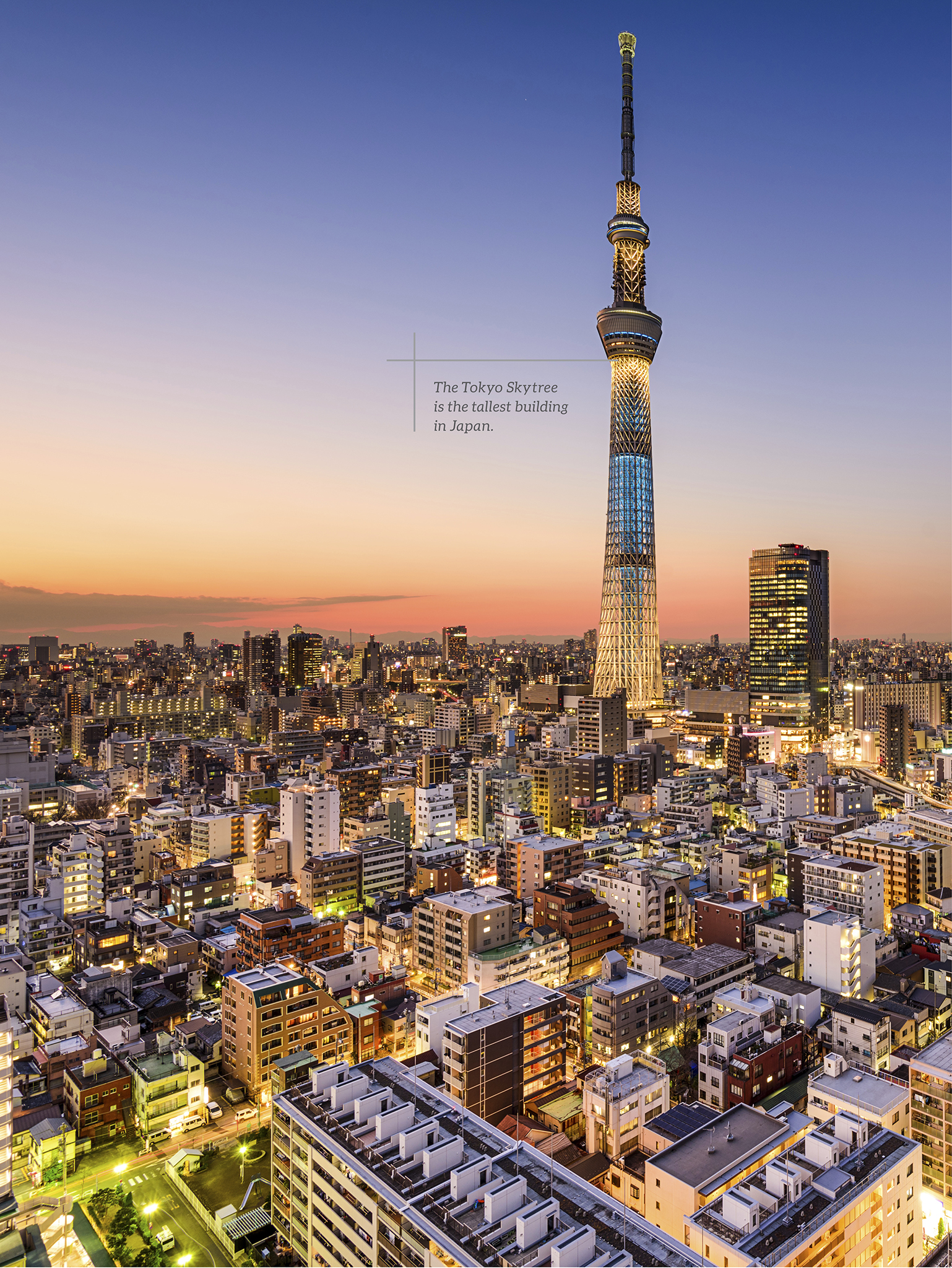
D The Tokyo Skytree dominates the capital’s skyline.
Be More Japan Engineering marvels
Discover Tokyo’s Highs and Lows
You can trace Tokyo’s engineering prowess—from the subterranean depths of the Metropolitan Area Outer Underground Discharge Channel to the top of the Tokyo Skytree (pictured). The former is open for daily tours, while the latter offers 360-degree views of the city from its observation deck.
Connecting People and Places
One of the most visible examples of Japanese engineering prowess is the rail system. The Tokaido Shinkansen bullet train line reaches top speeds of up to 180 mph (285 km/h) and covers the 320 miles (515 km) between Tokyo and Osaka in a cool 2 hours, 22 minutes. It has a daily capacity of 360,000 passengers, and yet the average annual delay is less than 30 seconds per operational train. Despite having carried over 10 billion passengers since 1964, the Tokaido Shinkansen has had zero fatal accidents. Not one to rest on its laurels, operator JR Central is now building the Chuo Shinkansen, a maglev train that will travel at 300 mph (500 km/h), connecting Tokyo and Osaka in just over an hour.
Be More Japan Engineering marvels
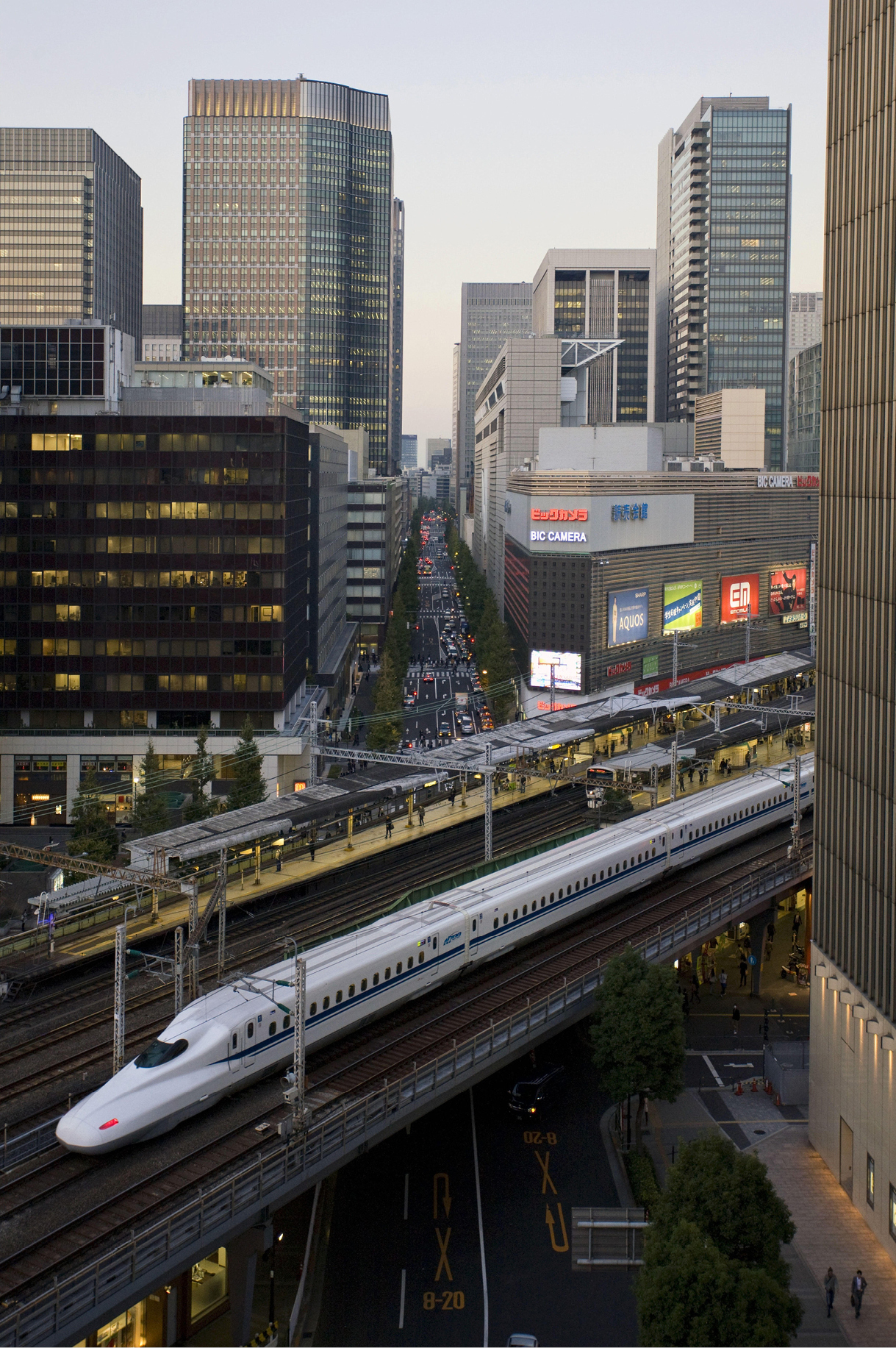
D Bullet trains connect Tokyo with most of Japan’s major cities.
Be More Japan Engineering marvels
Challenging Environments
Underground spaces play a vital role in regulating river levels in Japan. On the outskirts of Tokyo is the Metropolitan Area Outer Underground Discharge Channel, otherwise known as G Cans. This mammoth sewer system, costing ¥230 billion and completed in 2006, is designed so that Tokyo can cope with the typhoons and severe rainy periods that are a feature of the capital’s weather. The system consists of five colossal silos that are connected by a 4-mile (6.5-km) tunnel leading to a huge underground storage tank. This temple-like structure—58 ft (177 m) long, 256 ft (78 m) wide, and 82 ft (25 m) high—can pump out the equivalent of an Olympic pool in one second.
Above ground, the Tokyo Skytree— the world’s tallest freestanding broadcast tower at 2,110 ft (634 m)—has taken inspiration for earthquake-proofing from Japan’s centuries-old technology for building five-story pagodas. The pagoda’s central column (shimbashira) does not physically support any stories, but instead acts as a counterweight around which the rest of the tower can vibrate; similarly, the Tokyo Skytree’s core column was constructed separately from its surrounding steel frame. Oil dampers were also installed so that in the event of a quake, the shock can be absorbed. And just like actual trees, Tokyo Skytree is also supported by sturdy roots in the form of clusters of 165-ft- (50-m-) deep walled piles with steel-reinforced concrete nodes.
Be More Japan Engineering marvels
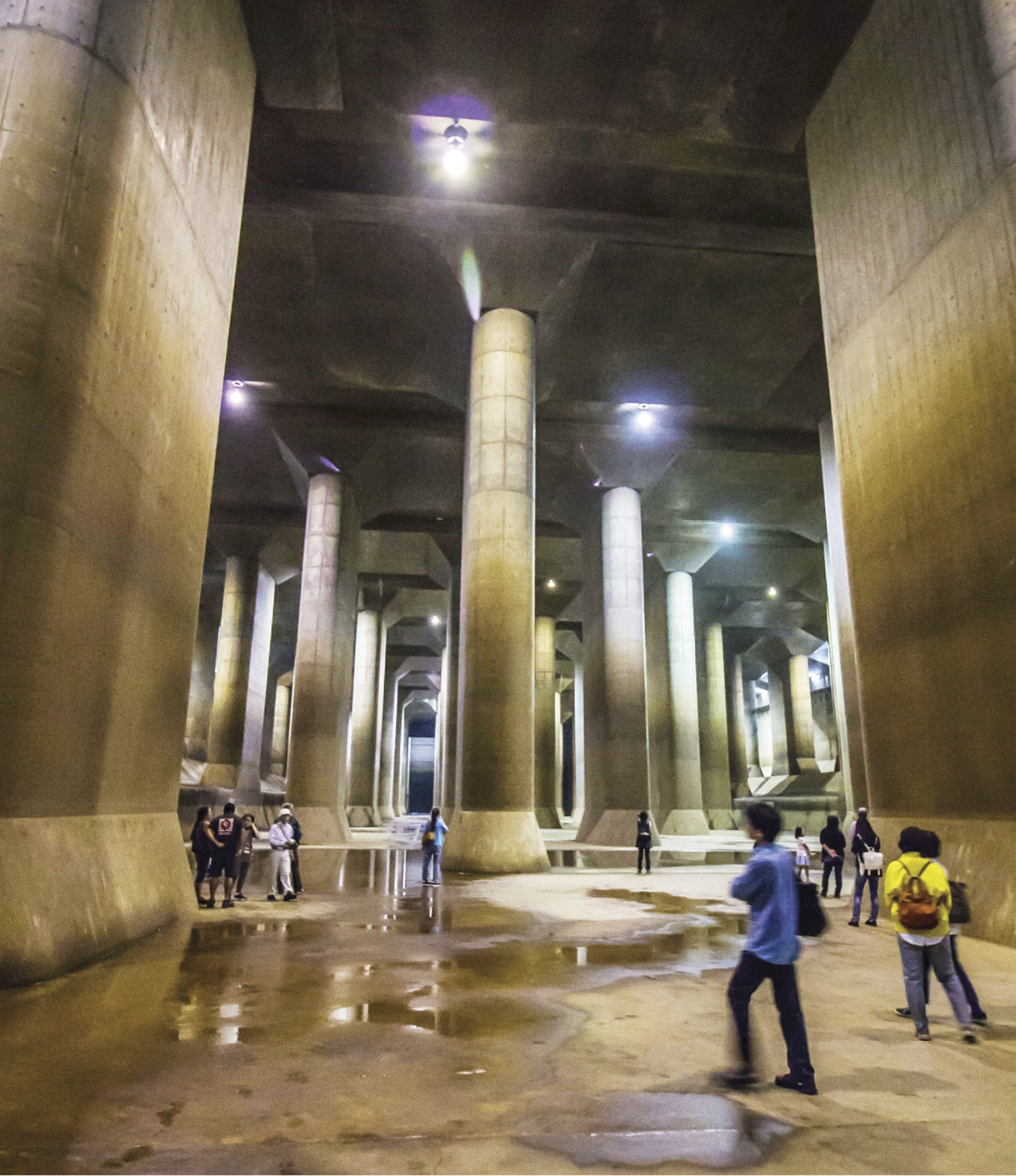
D The Metropolitan Area Outer Underground Discharge Channel is part of an important flood-control system.
Population Pressure
In Japan’s population-dense cities, where land prices are astronomic, finding space to build homes is a pressing issue. This has resulted in architects designing so-called “skinny houses.” One of the most famous examples is Tadao Ando’s Row House, built in Osaka in 1976. At just over 10 ft (3 m) wide, this starkly simple concrete building has no windows (to enable privacy), instead allowing light in via a central open courtyard. A more recent iteration is Muji’s prefab Vertical House, with a footprint of just 540 sq ft (50 sq m). The three-story home has no interior walls and doors, instead using the central staircase as a room divider.
The lack of space for building in cities also means that parks and communal green spaces are limited. One solution has been to design buildings that preserve and create as much green space as possible. A good example is the Acros Building in Fukuoka on Kyushu Island. Looking like a contemporary Hanging Gardens of Babylon, the green roof also reduces the complex’s energy consumption by keeping the temperature inside more constant.
The challenges of an aging population have also encouraged ingenious designs for Japan’s built environment, such as the inventive Reversible Destiny Lofts in the Tokyo suburb of Mitaka. This rainbow-colored apartment complex is made up of stacked cubes, spheres, and tubes, with units featuring sunken kitchens, multiple levels, power outlets in the ceilings, and weirdly angled windows and walls. This is not just architectural eccentricity but a deliberate design to challenge residents, with the aim of helping to extend a person’s life by constantly stimulating their senses.
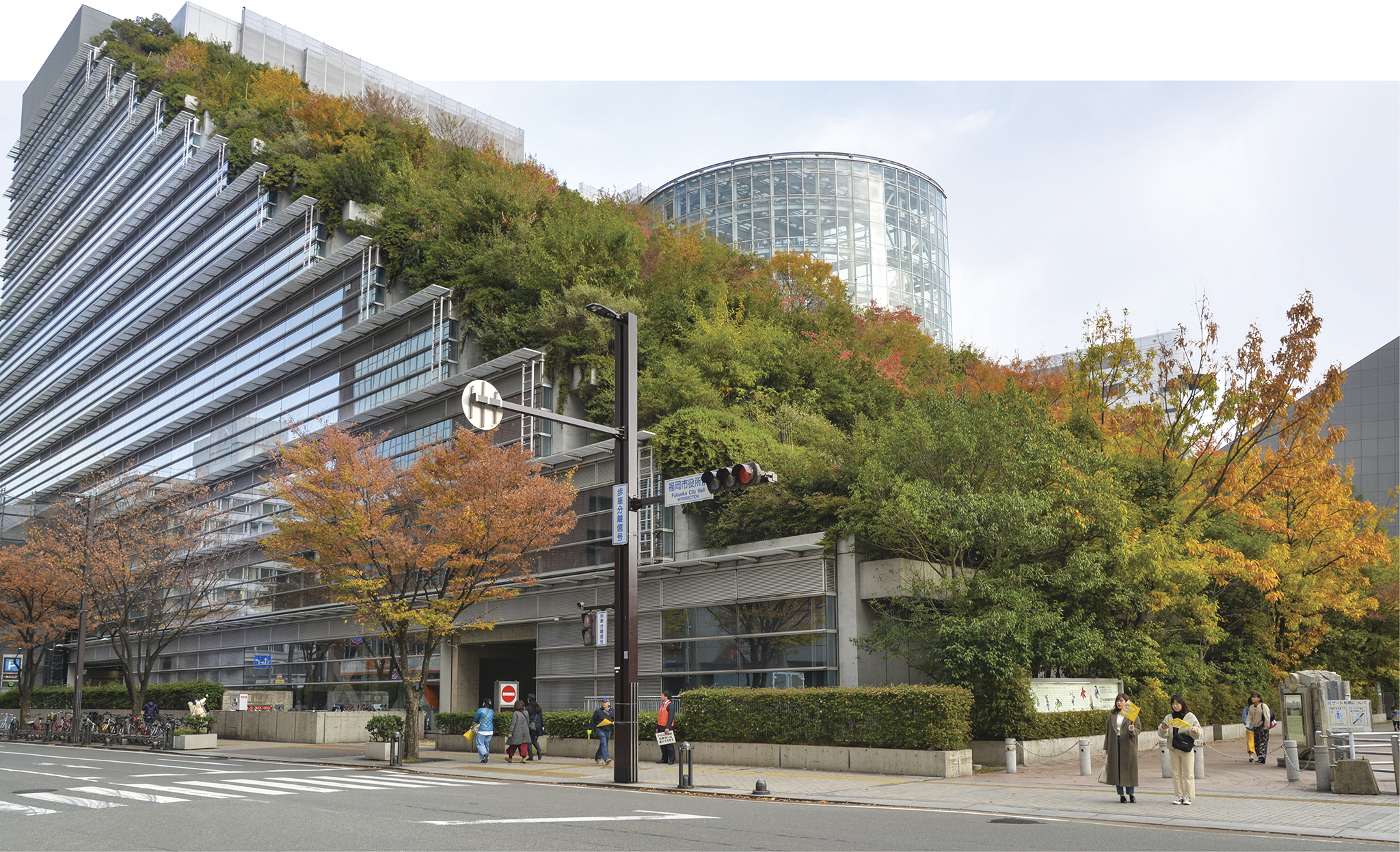
D The green roof of the Acros Building in Fukuoka (Fukuoka Prefecture) is part of a public park.
recycling
The Acros Building’s green roof captures rainwater runoff to support local flora and fauna.
Be More Japan Engineering marvels
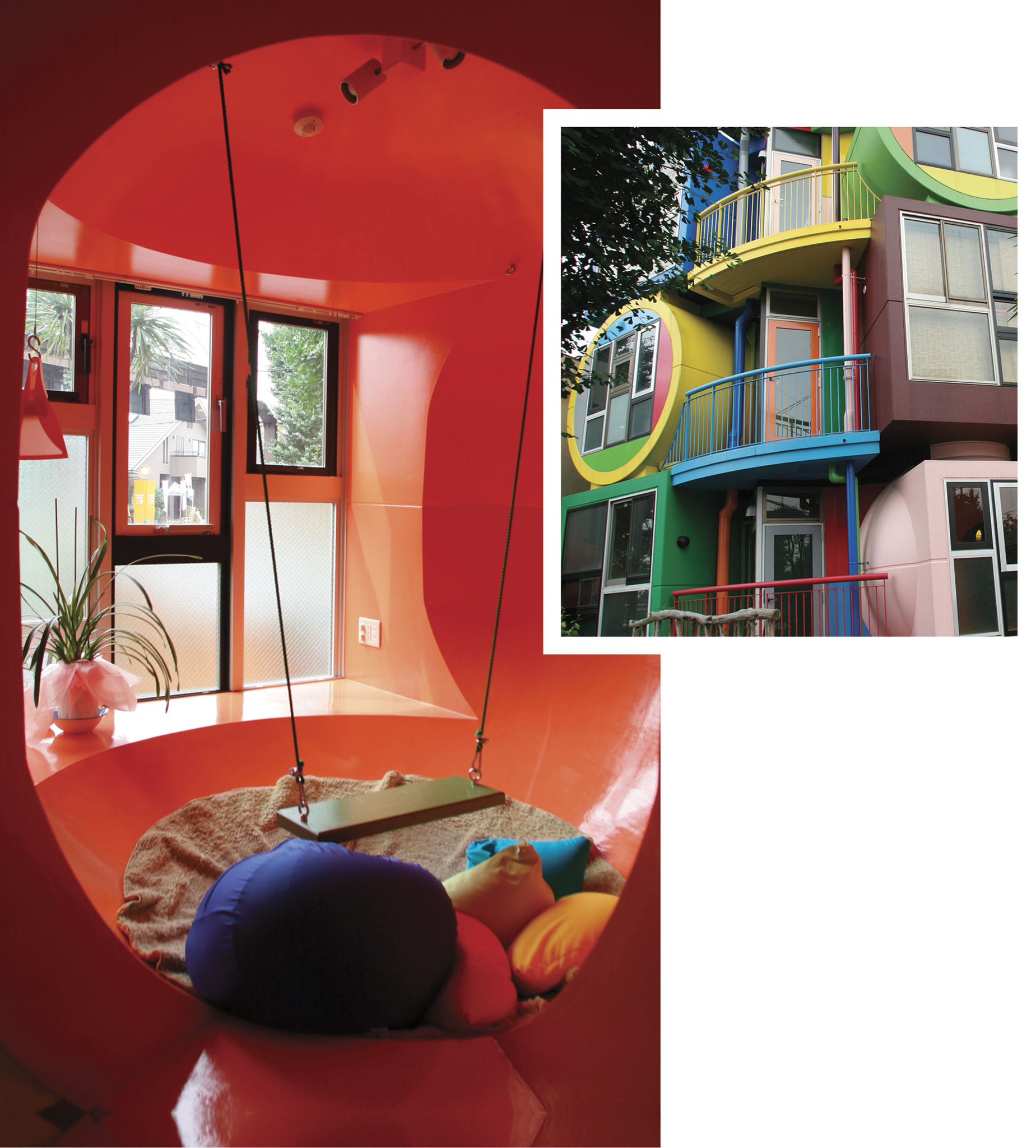
D The Reversible Destiny Lofts, by Arakawa and Madeline Gins, aim to redefine life for the elderly.
